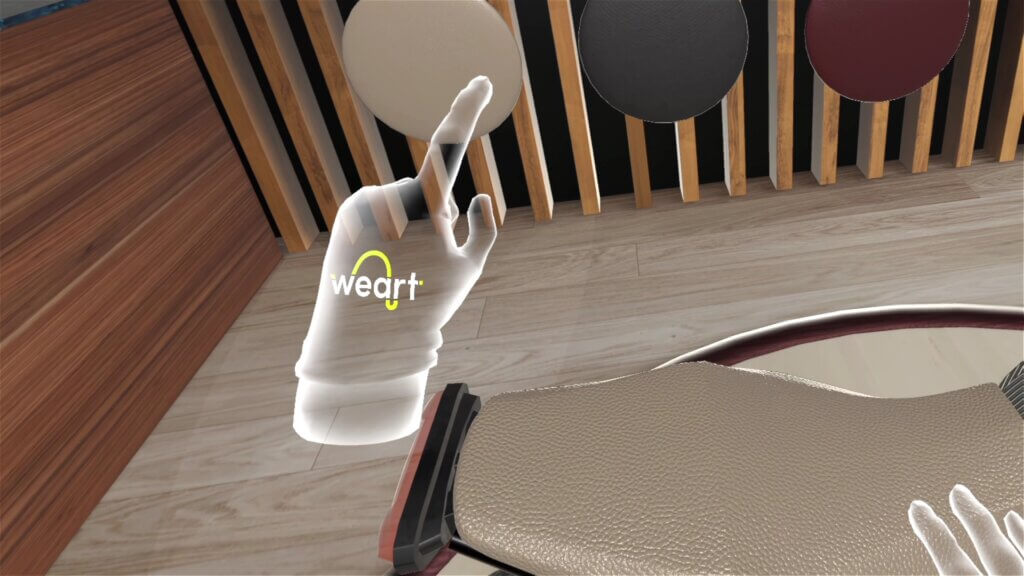Pills of Haptics:
How our Textures Rendering technology works
In this article, together with our CTO Giovanni Spagnoletti, we explore the texture rendering technology embedded in our TouchDIVER haptic gloves, which simulates over 20 surfaces with varying levels of roughness and composition.
How do TouchDIVER gloves render textures?
Textures are produced using a piezoelectric haptic actuator provided by TDK, which operates based on the piezoelectric effect by converting electrical signals into mechanical displacement. Unlike LRA (Linear Resonant Actuators) and ERM (Eccentric Rotating Mass) actuators, it doesn’t involve moving any mass. When voltage is applied, the actuator expands or contracts, creating motion and force with high-frequency performance and fast response times.
Why is there a need for rendering textures?
Textures rendering plays a crucial role in our sense of touch, enabling us to perceive surface qualities like roughness and smoothness. In haptic systems, texture rendering involves generating realistic tactile sensations that replicate the feel of real-world surfaces or objects. Various techniques and technologies are employed to achieve haptic texture rendering, with one common approach being vibrotactile feedback. This method uses vibrating actuators or motors to create sensations on the user’s skin. By adjusting the frequency, amplitude, and spatial distribution of these vibrations, different textures can be simulated.

What different textures could be felt by using TouchDIVER?
Our current tactile library includes 20 distinct materials that simulate surfaces with varying roughness and composition, such as stone, plastic, aluminum, and cotton. While the library offers a finite set of base textures, developers can create an unlimited variety of roughness levels by adjusting three key parameters that modulate the base signal. Users are also able to add custom textures to the tactile library, expanding the base signals and enhancing the ability to perceive an even broader range of materials.

What are the differences in textures rendering between WEART and other products in the market?
What sets our technology apart from other products in texture rendering is the superior resolution and bandwidth of our technology. Most other market offerings rely on vibrations at specific frequencies, which work well for notifications but fail to accurately convey the differences between materials. On the other hand, our technology allows for precise force and texture modulation, effectively simulating the natural sensation of a fingertip sliding over a surface by adjusting both pressure (contact area) and scanning speed (frequency modulation). This creates a more realistic tactile experience.
To know more about our piezoelectric actuators, visit this page.
To know more about our piezoelectric actuators, visit this page.


